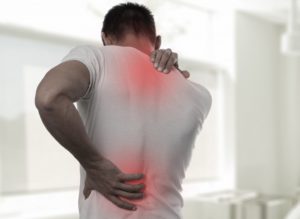If you were to ask most individuals what it takes to build and maintain muscle mass, they’d likely say that you need to eat protein—and lots of it. There’s no more popular fitness cliché than gym enthusiasts guzzling on a protein shake. However, it’s a cliché for a good reason—muscle building and protein typically go hand in hand. That’s because protein contains high levels of amino acid, which are the building blocks of strength.
A high-protein diet requires the individual to eat more protein and fewer carbohydrates and fat to speed up weight loss, enhance energy levels, and improve one’s overall athletic performance.
Just like how professionals offering plumbing services help you ensure your home’s plumbing system is properly working, protein makes sure your body is in top shape. However, does it really build muscle mass?
Here’s what you need to know about high-protein diets.
Benefits of Eating More Protein
Firstly, it’s no secret that protein helps you build and maintain muscle mass, helping you perform various daily tasks better and shape your muscles. So, stocking up on protein can speed up your ‘bulking’ journey, making it easier for you to get the gains you want.
Following a high-protein diet can help you feel fuller and more satisfied after each meal, helping you eat less throughout the day and maintain your ideal body. Plus, when you plan your meals around a lean protein source gives you less plate for foods that aren’t healthy—ensuring you stick to the diet.
Tips for Getting into a Protein Diet
If you’re having a hard time following a high-protein diet, consider following the tips below to make the transition easier and help stick to the diet long-term.Include Protein in Every Meal — The best way to subtly add protein to your meals is by planning them around a protein-rich food, including lean beef, chicken, turkey, and pork, then fill the rest of your plate with vegetables.

Indulge in Protein-rich Snacks — When on a high-protein diet, you can still eat snacks, but make sure to stick to snacks rich in protein to help you stick to the diet. The best types of protein-rich snacks you can grab on to go are almonds, Greek yogurt, or ricotta cheese.
Begin Your Day with Protein — The best way to start your day is the healthy way, and for high-protein diets, this means eggs, leafy greens, or berries. If you don’t have the time to eat, you can also go for a smoothie made with protein powder, such as whey, collage, or pea protein.
Go for Whole Grains Rich in Protein — Having carbohydrates in your meal plan is still essential to ensure a healthy and well-balanced diet, but it’s best to skip ‘refined’ or processed carbs that contain little to no protein. So, instead of eating refined grains such as white rice, pasta, and bread, replace them with whole grains rich in protein, such as amaranth and quinoa.
Tofu works — protein does not always have to come from animal fat. In fact, tofu is a great source of clean protein that you can enjoy every day. Tofu is ideal for vegetarians or those who are staying away from meat because of cholesterol or high blood pressure. It is also rich in zinc, magnesium, vitamin B1, and even copper.
Although following a high-protein diet can be an efficient strategy for weight loss and building muscle mass, this diet often cuts out other essential food groups, including fruits, grains, and healthy fats—and ultimately doesn’t provide a healthy, well-rounded diet. So, remember to add more variety to your diet for better results.














